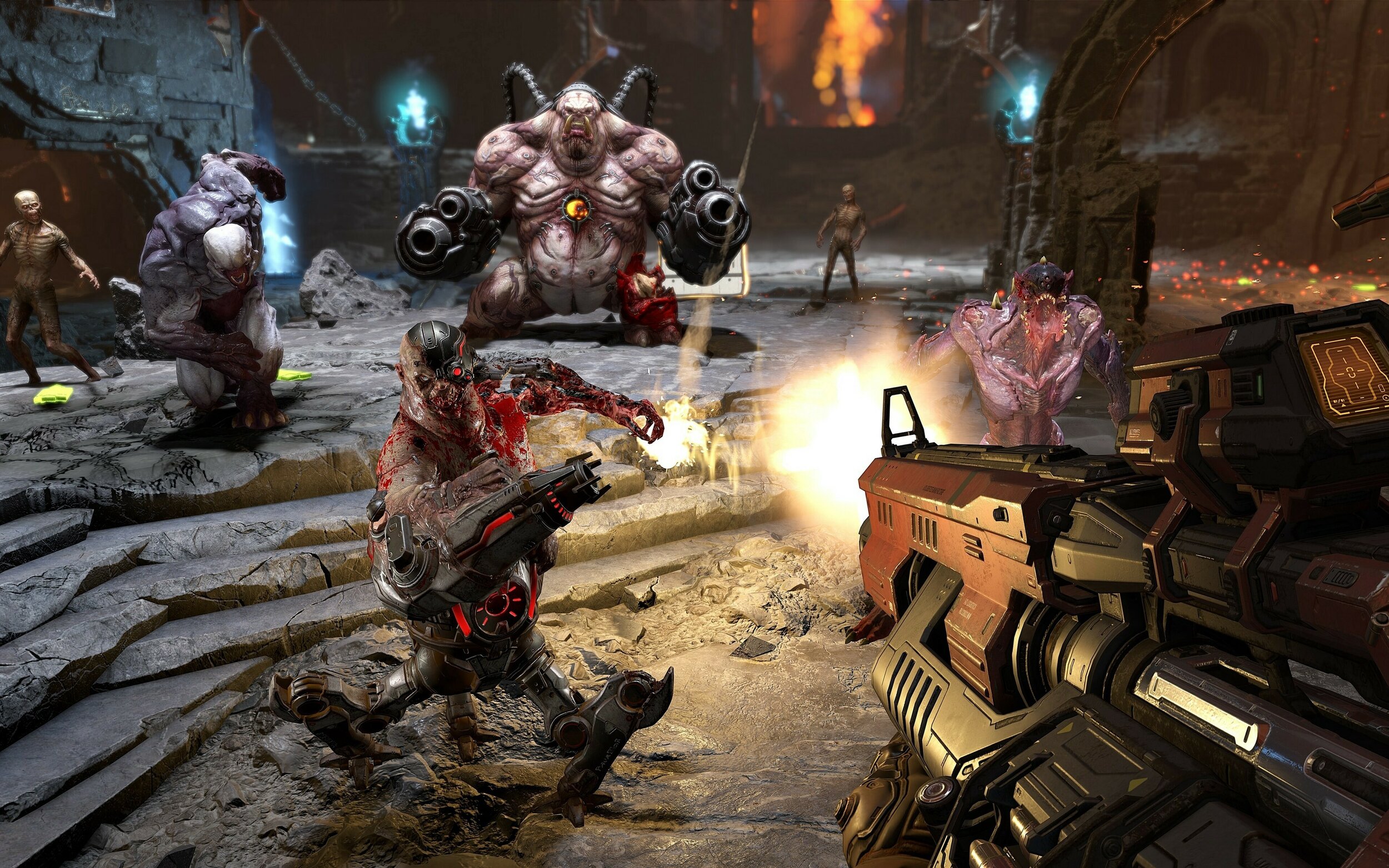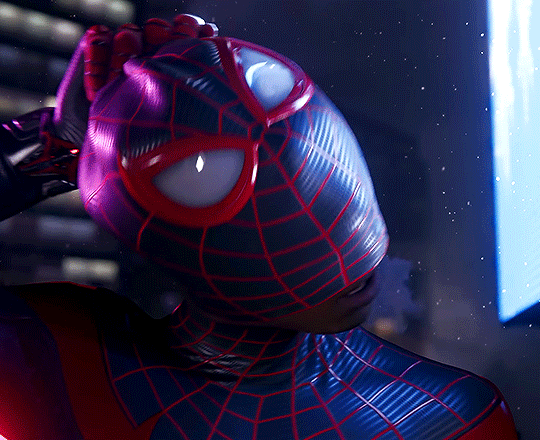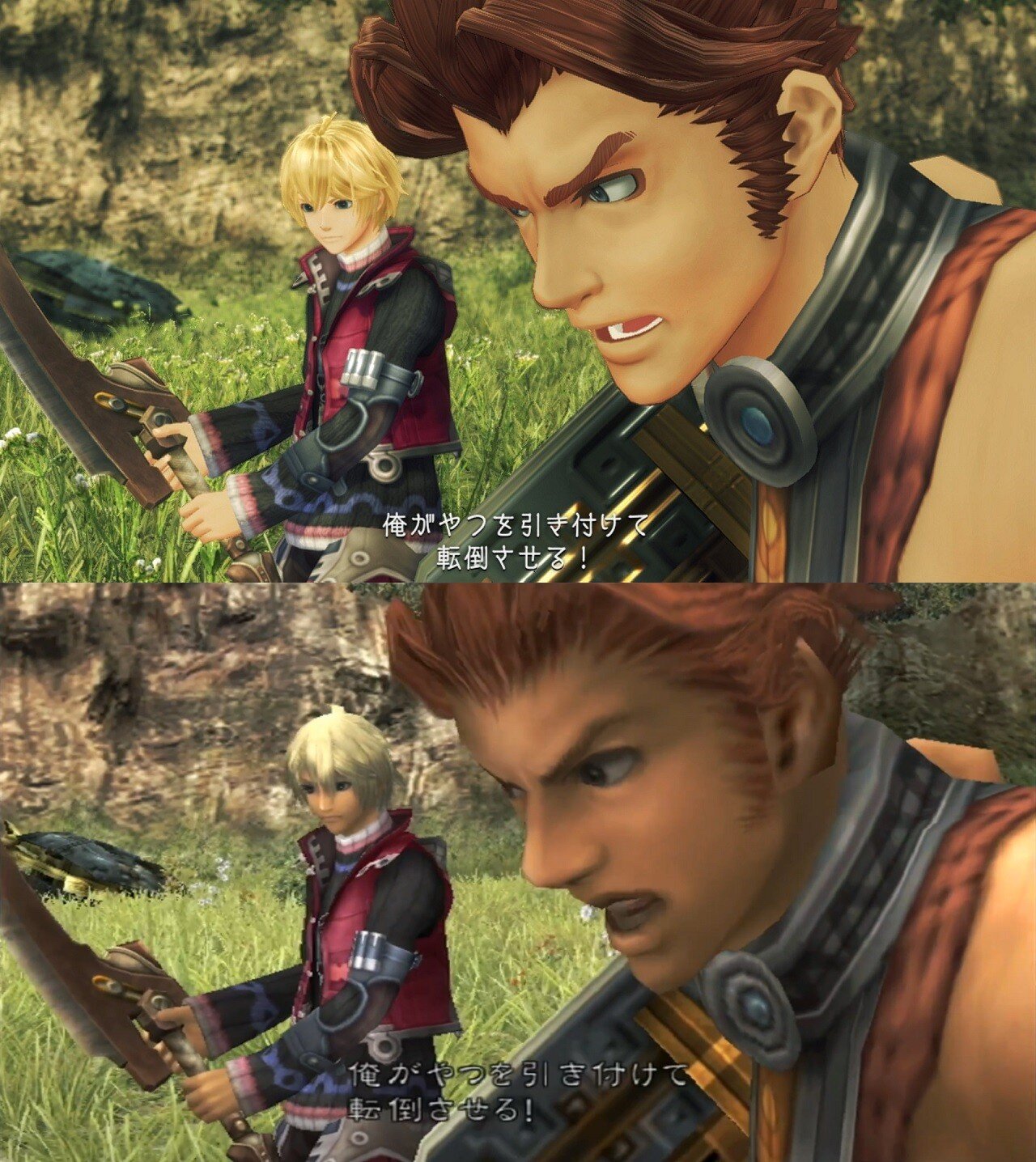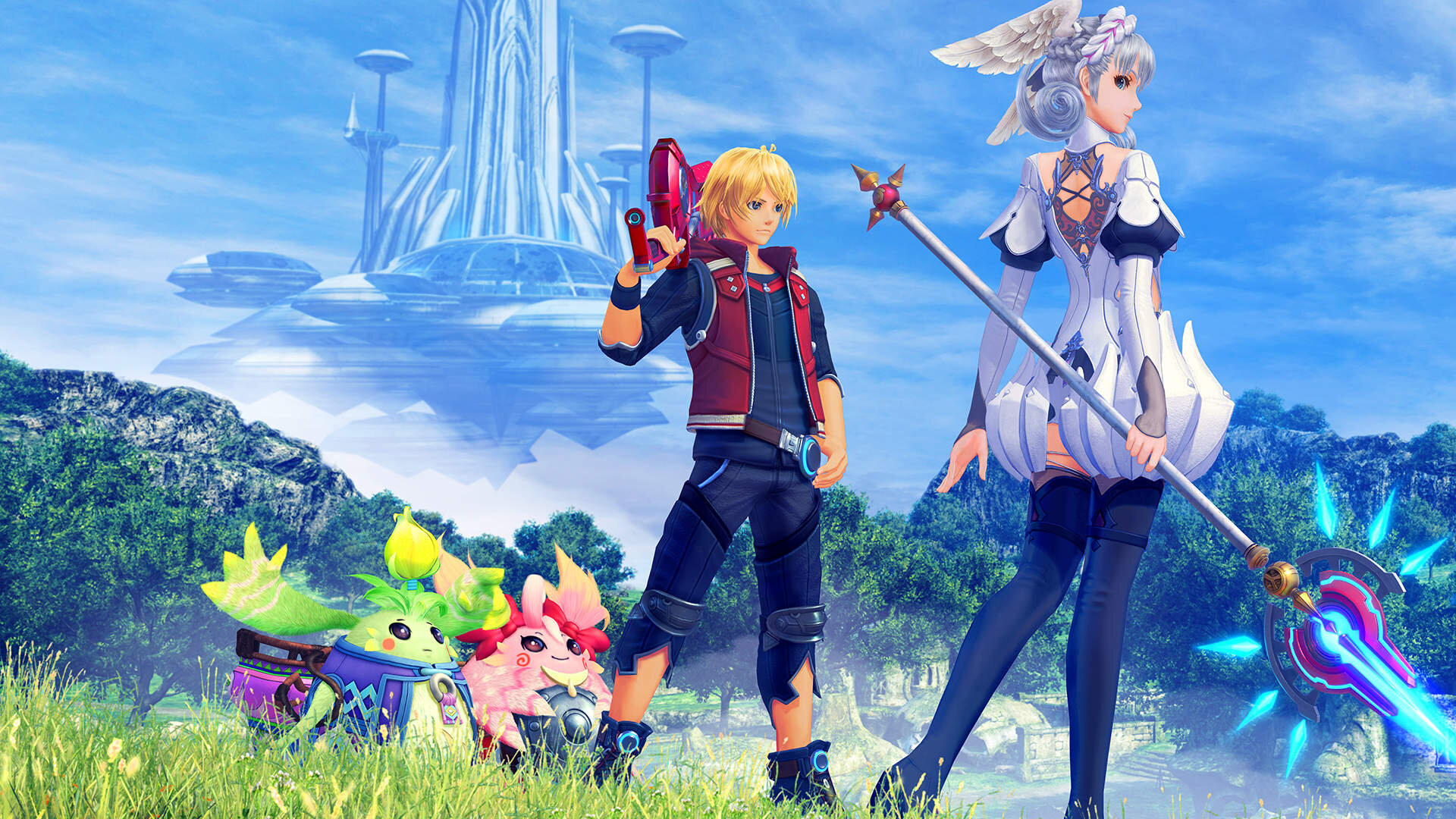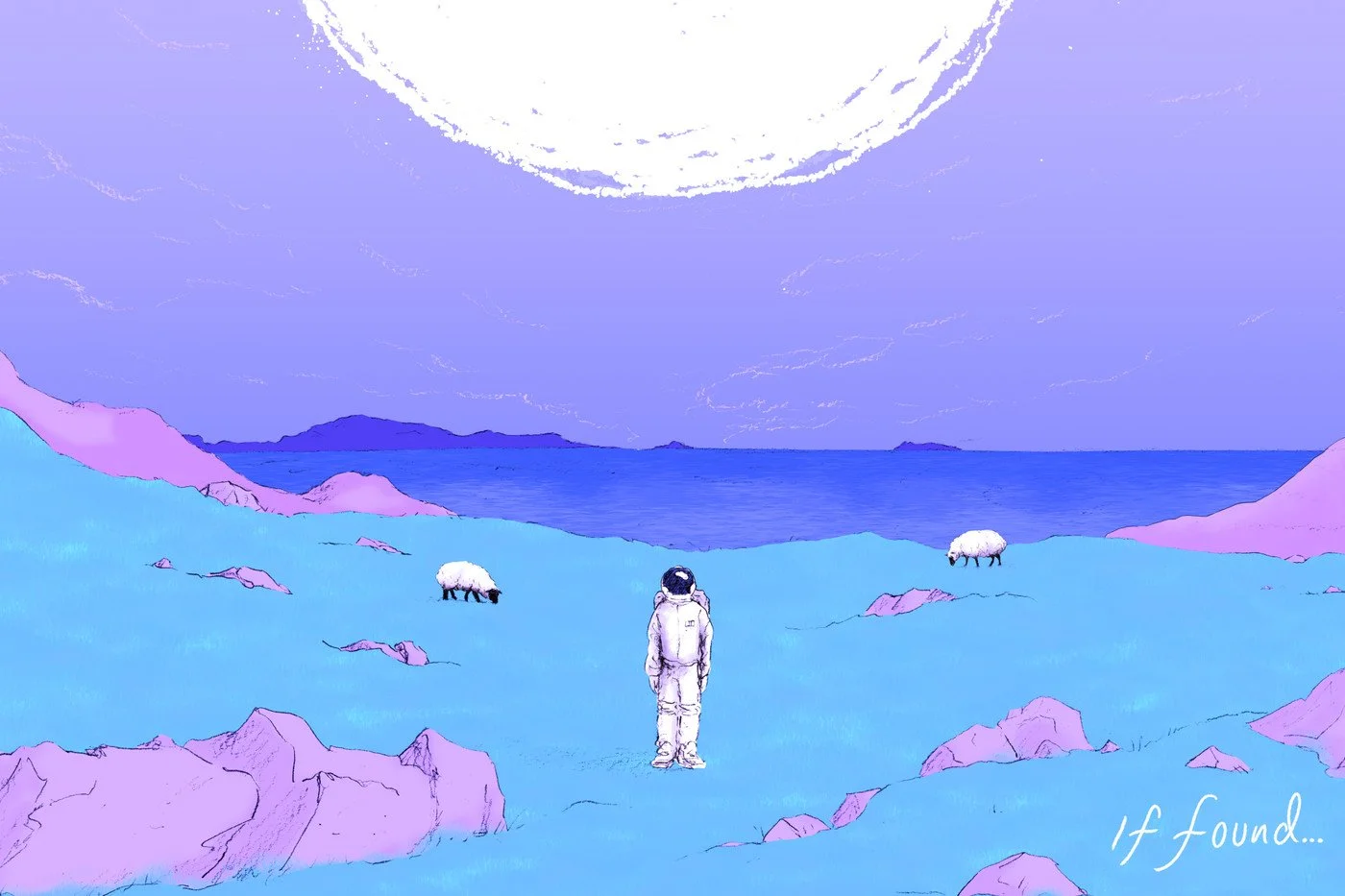Jon Simpson, Michael Beckwith and Will Sawyer's Games of 2020 (and another editor note) | Winter Spectacular 2020
Ollie back again.
So it’s Christmas day. I’m spent time with the fam, eaten too much food, fallen asleep accidently and now I’m writing this. If you read yesterdays group piece you’ll know what this is - three startmenu contributors are about to tell you a little about their games of the year. I won’t write a big, long thing today (and not it’s not just because I’m tired and lazy… Ok maybe a little bit those two things) instead I’ll just say thank you.
Thank you for reading startmenu, sharing our work and supporting our writers. The beautiful thing about this site is it can be anything people can write personal essays or news posts, GOTY lists or guest on a podcast. I think the thing that really hit me most though wasn’t getting so many successful folks to guest write for us this month or the fact that people who have written for us (and even been edited by me) are landing gigs in the industry. No, the that let me know startmenu can now be called a success is that we all just organised to play Among Us tomorrow. That’s it. We’re a community and colleagues and friends, we can be anything we need each other to be and be there for each other. So, erm, thanks I guess. For helping that become a thing, it’s really cool we’re here and we have no plans on leaving anytime soon!
Will Sawyer
Doom Eternal
*shoots blindly*
”AAAAAAAAAAAAAAAAAAAHHHHHHHHH”
After a pretty dry January and February for games, March 20th was shaping up to be the true start of gaming in 2020 with two triple-A heavyweights from very different camps releasing. Animal Crossing: New Horizons and Doom Eternal joined us on the same day as the world started going to shit. As a huge fan of Doom (2016), I was excited to see how all the new features and changes would come together in the hotly anticipated sequel, so naturally, it was my go-to pick. Sorry, Mr. Nook.
One of my biggest concerns with Doom Eternal was how the game felt to play. Doom (2016) felt like it set such an impossibly high bar for single-player arena-combat-shooter. Given all the fancy hells and whistles that had been shown off at E3 briefings and QuakeCon, I was sceptical as to if things would all get a bit too busy or if this would all form a familiar, yet enhanced, Doom experience. The “feel” of a game is certainly one of the hardest things to convey in gameplay videos, but especially for a fast-paced shooter like Doom Eternal. Weapons need to feel powerful and weighty, the movement needs to feel buttery-smooth and responsive, and the enemy demons need to be challenging, but not impossible to beat and that is all very hard to demonstrate in a 10 or even 20-minute hands-off demo.
bonk
Thankfully, Eternal’s gameplay built nicely off the already excellent base of its predecessor by tightening everything up and dialling it all up to 11. While there are elements of Doom (2016) that I like more, I still can’t imagine going back to it now that I’ve got used to the Doomslayer’s expanded set of tools. Imagine not being able to dash, use a shoulder-mounted flamethrower, or the super shotgun’s grappling/meathook attachment! In Eternal nothing went to waste as each weapon, weapon mod, and ability is crafted and balanced in such a way that it will always have a use and, in fact, needs to be used to succeed.
While I loved Doom’s more mindless approach to combat – running and gunning with the super shotgun, switching weapons only occasionally – I also love that Eternal’s encounters force that behaviour out and fuse methodical approaches with thinking on your feet. Getting into this mindset caused me a lot of deaths in the early levels. There was an abundance of forgetting to use certain tools, such as the flame-belch to get armour packs, and poorly positioning myself as I tried to just shove the barrel of whatever weapon I was using down the throat of a bloodthirsty demon.
Once I got into that flow state and properly learnt how to effectively use the Doomslayer’s full array of destructive tools against demons, it felt like a completely new game. What started as a brutally punishing and offputting-ly hard experience morphed into an incredibly fluid and fulfilling combat experience.
Hearing the satisfying ping noise as I destroyed the weak points on bigger demons never got old, but the best example of this sense of achievement was in finally overcoming the much-maligned Marauder demon. He was by far the hardest piece of the ‘Doom puzzle’ to figure out because he was a true match to the Doomslayer’s speed, power, and cunning. While I’ll admit, it took some outside guidance to fully understand how best to take him down. But now I understand that hot-switching weapons was a vital strategy for all demons in Doom Eternal, not just a fallback for facing the Marauder. Now when I see a Marauder running at me with his red-hot Argent axe, I no longer quiver in my oversized Slayer boots, instead, I laugh as I tear chunks out of him by switching between a giant laser crossbow and the super shotgun at unnatural speeds.
Doom Eternal’s fun all comes down to how fast, fluid, and satisfying the combat feels. For a game that appears to just be shredding through the hordes of Hell, it presents a surprising amount of depth and strategy that sets a high bar for all other single-player shooters. The vast improvements made to an already great foundation make Doom Eternal a superb sequel and a game worthy of your attention after a year that has felt like an eternity.
Huh… I… Like what you’ve done with the place.
Animal Crossing: New Horizons
While I was ripping and tearing my way through ‘Hell on Earth’, the rest of the world was apparently busy inviting animals to come and live with them on a private island. About a month later, I too entered this world of cute, calm, and chilled-out vibes, but it was a strange, juxtaposing U-turn having just come from the blood-soaked, ultra-violent, high-octane action of Doom Eternal.
WELCOME… To my tent.
Since I was a complete Animal Crossing novice, I didn’t really know anything about the series and wasn’t sure if it was the kind of game I would even enjoy. After watching livestreams and videos of the game for the first month of its life, the game definitely looked fun, but it was clear that having other friends to enjoy the game with you was the key to getting the most out of it. The idea of dropping £50 on a Switch game that is best with friends when barely any of my friends owned Switches at the time, meant that Tom Nook’s Island package was a tough sell and a pipe dream at launch.
Being about a month into a long lockdown and living alone in a student studio flat only made my New Horizons FOMO worse. Then things reached critical levels when, one night over a Zoom call, I suddenly heard the unmistakable sound of my friend catching a fish and she told me she had just got the game. This was the excuse I had been looking for and I finally caved to curiosity.
It turns out it was an absolute delight, right from the start. My first challenge was to think of a top-tier pun island name and, after spending too much time searching ‘synonyms for island’, I set foot on Okeydo Cay (A name that got recognised by former Edge Magazine editor Jen Simpkins, so you know it’s funny). My island had two large rivers, delicious oranges, and was home to Rod the purple jock mouse and Hazel the red unibrow Squirrel. Aside from the inescapable popularity of Raymond and Marshall, I knew absolutely none of series’ villagers, so it felt nice to just get to know these curious, little digital animals. It’s worth noting that Rod and Hazel are still residents of Okeydo Cay and I love them very much.
I’m pretty sure this is an album cover for an indie pop band.
After several days of waiting for Blathers to get his museum up and running, I was finally able to start donating fossils and various critters to bolster my collections which was one of the things that excited me most about New Horizons. Getting to share all this with one of my friends was lovely too. We exchanged fruit, resources, and the odd fossil to help each other out.
Eventually, a few of my Switch-less friends managed to bag themselves a console and a copy of New Horizons. Hearing of their purchases was like seeing Gandalf and the Riders of Rohan arrive at Helm’s Deep. Once they had got their homesteads up and running, we would spend hours at a time giving little guided tours of each other’s islands and meeting villagers from faraway lands.
Once I had finally improved my island enough to meet the lofty standards of Tom Nook and Isabelle, I was able to host what has been the social pinnacle of New Horizons so far: the inaugural Okeydo Cay K.K. Fest - inspired by OutsideXtra’s Luke Westaway. My friends and I gathered around the musical virtuoso K.K. Slider and listened to him rock out. I could help but laugh at the sight of our characters’ chat bubbles filling with all-caps cheers and praise for Mr Slider’s talent. With live concerts out of the equation for 2020, seeing this little virtual dog go wild on a guitar was the next best thing and a true delight.
Anyway here’s *bleep**bleep*-wall.
I wouldn’t necessarily say Animal Crossing: New Horizons is one of the greatest games ever made. It has brought me so much joy but also has lots of small quirks and strange idiosyncrasies typical of Nintendo that can make it annoying to play. Truth be told, I only occasionally check in on my villagers these days as I’d rather do anything other than my daily chores. As much as I enjoy Blathers for the fountain of knowledge that he is, he drives me insane whenever I present him with fossils to appraise, only for him to tell me for the millionth time that we already have fossils such as these.
In a year that has been objectively rubbish, the two months after New Horizons' launch felt almost blissful as the gaming world converged on a single point and celebrated the simple pleasures of island life. With Switches going out of stock quicker than ever, it seemed that New Horizons was also an entry point into the gaming world for many. Even though it isn’t my favourite game of the year, its social impact is undeniable, and I think it is deserving of being the definitive game of 2020.
Will Sawyer is a current student at Kingston University. You can usually find him as a master warlock in Destiny or as a perpetually stressed Mercy main in Overwatch. Be sure to follow Will on Twitter at @Will_Sawyer17 for more.
Michael Beckwith
Marvel’s Spider-Man: Miles Morales
Miles has more heart in his left pinky than most video games’ have in their entire cast.
It almost feels like cheating sticking this game on the list since part of what makes it so great is how much it brings back from 2018’s Spider-Man game (which itself was a Game of the Year contender back then).
The superb and joyful swinging that almost makes you not want to take advantage of the fast-travel feature, the bevvy of meaningful side activities, J. Jonah Jameson’s hilarious anti-Spider-Man podcast, the little details when mingling with the people of New York City – all this very much helps accentuate that, as good as this game is, it’s ultimately a glorified expansion rather than the full-on sequel it arguably should have been.
But, sometimes, it’s okay for a follow-up to mostly do what it’s predecessor did before. After all, if it isn’t broken, don’t fix it, right? I was always 100% down with simply enjoying another Spider-Man adventure after Insomniac did such a good job with the first game.
The Tinkerer is a way more compelling a character than they have any right to be.
And besides, it’s not as if Miles Morales is lacking new stuff. Case in point: the title character himself. While he fundamentally plays a lot like Peter in the first game, Insomniac do everything they can to help Miles feel like his own Spider-Man (with that even being one of the central themes of the game).
His animations depict him as still a greenhorn; he doesn’t swing through the city as gracefully and comes across as a tad clumsy. One of his stealth takedowns has him pull a goon up with too much force, causing him to nearly fall off his perch and quickly readjust himself before smacking said goon down and webbing them up.
Combat sections feel more challenging, possibly to represent Miles’ rookie status, but whilst he lacks Peter’s large number of gadgets (he only has four at his disposal), he has his own means of dealing with enemy encounters, namely his Venom powers.
Though it’s initially tempting to save his Venom powers for later conflicts, the game actively encourages you to use them as frequently as you can and for good reason: they are supremely helpful and can turn the tide of a fightback in your favour, as well as prevent certain enemy types from being too annoying to deal with.
His camouflage technique makes the stealth sections (what were possibly the weakest/most frustrating element of the first game) much more bearable. I certainly found staying in the shadows more enjoyable here, though the game takes steps to prevent this from being too overpowered.
But perhaps Miles’ greatest strength is in his character. As much as I love Peter’s portrayal in the first game, his Spider-Man felt closer to, funnily enough, someone like Iron Man, an already beloved figure with access to top-notch technology and open assistance from law enforcement.
Miles feels more like an underdog in comparison. The cops don’t trust him and, sometimes when he shows up to help, people fail to hide their disappointment that it’s not THE Spider-Man.
But, as the game progresses, he gains more and more acceptance, thanks to an app that lets people directly contact him with requests. It’s quite the departure from Peter’s adventure where, whenever he helped people, it was more of a case that he was swinging by and noticed trouble.
Don’t watch the mouth, watch the hands.
Miles, though, is much closer to being a friendly neighbourhood Spider-Man. He goes out of his way to help locals. He develops friendships with specific people in Harlem and even collaborates with them.
Some of the app requests aren’t even for major crimes or anything. Sometimes it’s just to help a delivery driver get his van out of the snow or find a missing cat. It’s not all supervillain stuff and it helps foster a connection between Miles and the people he’s protecting.
This isn’t just the same game with a different character. Miles being the focus means everything now needs to be tailored to who he is and helping him grow from being Spidey’s sidekick into his own Spider-Man. This conceit quickly becomes the game’s core appeal.
Its short length can be a detriment to some, but Insomniac makes everything it includes feel like it belongs. It doesn’t pad the game with unnecessary gimmicks and features that exist to justify a higher time to beat.
There’s a lot more that could be said about how great this game is and, despite the length and similarities to the first one, I think it’s worthy of being a GOTY contender, even on PS4.
Xenoblade Chronicles: Definitive Edition
What a difference some extra polygons make.
This is arguably another cheat pick as it’s an enhanced remaster of a game that originally came out ten years ago, but I say it counts since it does contain wholly new content, technically making it a different game. Plus, I’m super biased anyway, as Xenoblade Chronicles is my favourite game of all time.
I always said to myself that I’d happily snap up the game again if it was ever re-released with upgraded graphics (I like the original’s visuals, but they are admittedly rough on the underpowered Wii) and Nintendo called my bluff. I vividly remember screaming at the announcement trailer, which began with the very familiar opening notes to the main theme music. Be thankful that I’ve been imposed with a word limit because I could probably write a novel’s worth of content about my adoration for this game. Everything that I loved about the original is still here. The expansive and fascinating world that you are actively encouraged to explore, the cast of likeable and memorable characters, the MMO-like combat that is always engaging and exciting, where you can still seize victory even on the cusp of failure, the fantastic musical score which has been fully rearranged and, in some instances, sounds even better, and the corny and quotable British voice acting – playing this game again felt like I had come home.
And, of course, the story remains fantastic. Being much older, I can certainly take a more critical stance on it, but I hesitate to call any part of it ‘bad.’ Its lowest moments are honestly only mediocre. While it still features plenty of JRPG tropes long-time fans of the genre will recognise, it uses them well to create a story that successfully tackles a bunch of themes, including family, revenge, sacrifice, nature vs technology, fate, and the relationships people build.
Hey. Hey… Hey you… Guess what time it is?
IT’S REYN TIME!
As for the new stuff, I not only had improved visuals to enjoy (I mean, the environments in the original were already stunning but the character models clearly needed more than a mere up-res), the main game comes with plenty of welcome quality-of-life improvements.
Hunting collectables for certain quests are less tiresome thanks to map markers. I could now dress up the party however I wanted while still equipping better armour (I actually didn’t do this, but the option was there and that’s great), and certain battle elements are much clearer. For example, attacks that do more damage based on your position sport a little icon that lets you know when you’re in the optimal position.
And once I reached the end of the story, I had a brand-new epilogue waiting for me. While much shorter than the main game, just experiencing a new adventure with returning characters Shulk and Melia and seeing how their lives are going after the games main events was simply a treat (the fact that both their voice actors reprised their roles definitely helped).
With how perfect Xenoblade Chronicles’ ending is, there was always the possibility that any additional story could have potentially upended what made it so good in the first place, but Future Connected avoids that pitfall and feels like a natural continuation.
Even on the Switch this is a staggeringly beautiful world.
Though it shows that the world isn’t in a perfect state and that conflict, despair, and bad people still exist, it also shows plenty of instances of hope and progress. It even ties up a couple of lingering plot threads and gives Melia the happy ending she never really got.
And on top of all that, it quite clearly sets the foundation for whatever future Nintendo and/or Monolith Soft have planned for it. While the series did continue with Xenoblade Chronicles X and Xenoblade Chronicles 2, I feel more confident than ever that this is now one of Nintendo’s core franchises; a classic yet modern JRPG series that can act as the company’s own Final Fantasy.
I can’t go into too much detail without spoiling a bunch, but my mind is abuzz with theories and possibilities for where the series could go next. And frankly, much like the characters in the game itself, I can not wait to see what that future holds.
Michael Beckwith is a freelance writer currently contributing to the Metro Online. When he’s not complaining about video games for children not catering to him, he dabbles in writing fiction and contributes to a radio show called The Entertainment Dome. You can see more from him on Twitter at @Brawler1993.
Jon Simpson
Destiny 2: Beyond Light
Well this seems ominous…
Destiny 2’s latest expansion Beyond Light is a new start for the game, representing the beginning of a trilogy of expansions that developer Bungie has already announced. The expansion adds a new story, new quests, new weapons, a new location, and for the first time, a new subclass element: Stasis.
Since the release of the original Destiny in 2014, characters have talked about “The Darkness” that represents humanity’s greatest enemy. However, for the most part, “The Darkness” as an actual entity has been largely absent from the game. This has changed with Beyond Light, as the Darkness has arrived, but so far it has not been the destructive force that it is often described as. Instead, players are able to wield the Darkness as an ice-like power called Stasis. Using Stasis powers feels fresh; freezing and shattering enemies is incredible, and new abilities such as the Glacier grenade, which creates ice walls (useful for cover) and platforms (good for when I accidentally fall off cliffs) wherever it lands, allow for new gameplay possibilities. Experimenting with Stasis abilities has been great, and I’m excited to see what both Bungie and players manage to do with them going forward, though I’ll admit they can be very annoying in competitive multiplayer. Freezing people feels great. Getting frozen, on the other hand, is frustrating beyond description.
Though the main story is not Bungie’s strongest, the story in Beyond Light is still good. I won’t get into it too much, because Destiny stories on paper can just look like a bunch of Proper Nouns thrown together. But, that said, the story of Eramis, a Fallen who is able to use Stasis powers, is enjoyable. She has a compelling backstory and makes for a good villain, though I wish she was given more time to shine, as it seems her story is over far too quickly. Thankfully there are plenty of quests after the initial Beyond Light campaign that explore the Darkness’ true nature and expands on the history of one of the game’s playable races, the robotic Exo. In fact, the quests that deal with the Exo and their creator, Clovis Bray I, are some of my favourites in all of Destiny’s six-year history.
Destiny soundtracks have a long history of being great and are always very motif-driven. Despite each of Destiny’s various sequels and expansions having their own themes adding up to over a dozen soundtracks, Michael Salvatori, Skye Lewin, and the rest of Destiny’s composers constantly amaze me with how they never seem to run out of memorable themes to incorporate throughout their soundtracks, and Beyond Light continues this trend. They do very creative things with synths and strings (there are some very good Cello sounds) that I never get tired of. One track from the raid in particular, “Deep Stone Lullaby” manages to stand out even among Destiny’s pedigree of fantastic soundtracks as maybe my favourite song from any of them.
Deep Stone Crypt doesn’t go in the direction you expect it to… literally.
Speaking of, it wouldn’t be a Destiny expansion without a new raid, a six-person mission full of puzzles, boss encounters, and shooting things all mixed together in a way that no other game does. Beyond Light’s raid, “Deep Stone Crypt” is amazing, with incredible environments, fun mechanics, and again, a memorable soundtrack.
Destiny 2: Beyond Light is a very good expansion for a very good game, but if I’m being sappy and honest, the best thing about it is that my friends are playing it again. Destiny has always been very important to us, going all the way back to playing the original in 2014 as college freshmen. We woke up at 5 a.m. for the release of The Taken King expansion in 2015, did the same for Rise of Iron in 2016, waited excitedly for Destiny 2 in 2017 and spent many a late-night raiding or playing Crucible over all those years. We’ve all graduated and moved on to bigger things like going to graduate or medical school, moving to different states, getting married, and all the other things you do when you “grow up.” But Beyond Light has brought us all back to where it all started, and I could make a joke like “the real _____ was the friends we made along the way!”. But for me, that’s exactly what makes Beyond Light so special.
Yo, this floating black pyramid seems… You know what, I’m sure everything is fine.
Fuser
Ah, I see you’re a true music connoisseur.
Fuser is a DJ game from Rock Band developers, Harmonix, that is one of the most fun things I’ve played with this year. Unlike Rock Band, the player is in control of the music. I wasn’t just following along with a set track of notes, I was the one creating the music. Fuser takes popular songs from across many different decades and separates the rhythm line, the bass line, the guitar, other instruments, and the vocals, and allows the player to mix and mash-up whatever parts they want. The game does the hard parts of DJing (matching pitch, key, and tempo) in the background, so the player is free to throw together whatever they want. It’s incredibly accessible, and that’s one of Fuser’s greatest strengths.
The actual “game” part of Fuser is fine. It’s nothing to write home about. In it, the player is tasked with taking crowd requests and mixing certain songs or genres together when they are told to. Again, it’s not bad per se, but when I’m mixing Lady Gaga’s “Born This Way” with LMFAO’s “Party Rock Anthem,” I don’t really want to be told to suddenly add the bassline from Billie Eilish’s “Bad Guy.” For the most part, the game’s campaign acts as a tutorial, and it’s very effective at that. It teaches the player how to drop parts onto the turntable, how to count beats and do so with perfect timing, what a “pickup” is, and other useful musical tricks. While I didn’t enjoy it as a game, it was great to get a bit of a peek behind the curtain of DJing and learning about how, and more importantly, why DJs do certain things while playing sets.
Yeah, yeah, uh, yeah. That’s sounds like total shit, publish it.
Where Fuser really shines is in its “Freeplay” mode where the player is free to take whatever songs they want and mix them however they want with no time limits or crowd requests. I’ve lost a large number of hours just messing around and taking different parts of songs and seeing what works and what doesn’t. I’ve created actual good mixes that sound professional, and I’ve created nightmares the type of which you’d normally find with less than 200 views in a YouTube rabbit hole that you fell down at 2 a.m.one night. And that’s the best part of Fuser; it lets me do what I always wanted to do at age 13 when I would scour the internet for isolated vocals and instrumentals and try to put them together in Audacity.
I took the drums and that one whistle part from Smash Mouth’s “All-Star” and mixed them with Glen Campell’s “Gentle on My Mind.” And you know what? It actually sounded pretty good. And if that doesn’t make it a GOTY calibre game, I don’t know what will.


